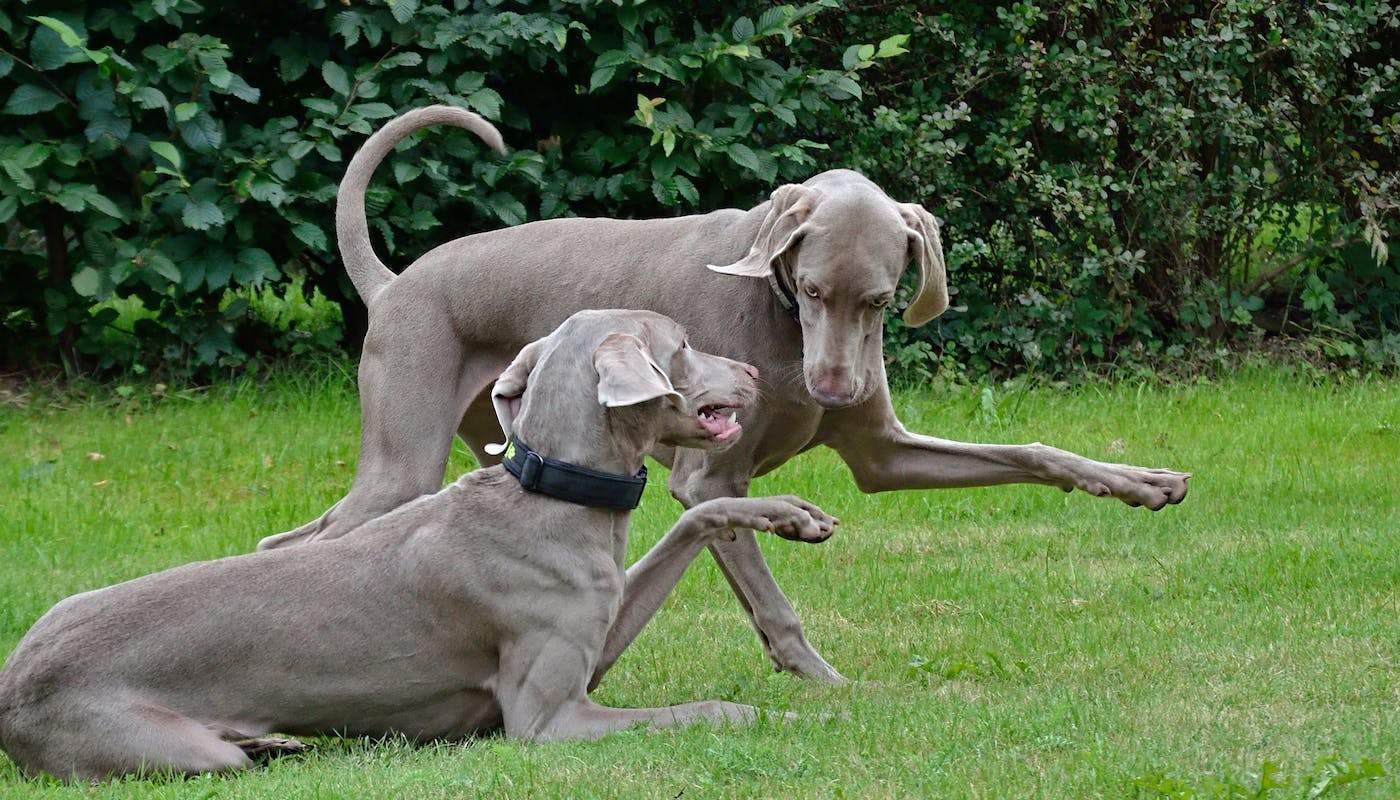How Do Dogs Communicate With Each Other?
Does your dog have canine friends – or even enemies? Our dogs communicate with one another in non-verbal ways including scent, body language, and behavior. When they find a pal whose playful instinct matches their own, it’s time to bounce! This article covers how our dogs ‘get to know’ one another, and when we should spot the warning signals and intervene.
The Language of Scent
Dogs have mastered the language of scent. This knowledge comes from your dog’s origins as a pack animal. In the wild, they would strive to protect unwell or in-season dogs. Just one sniff of another dog’s pee tells them if that dog is healthy, if they’re male or female, and if they’re ready to mate!
In fact, it’s usually not just pee that they’re sniffing. Dogs also have rear-located apocrine glands, which release pheromones. Castrated male dogs can have a bewildering scent which causes other males to attempt mating.
How Dogs ‘Talk’
You’ll have noticed they use their voice boxes, too! Your dog probably exhibits a range of barks. There’s the sharp, excited or anxious bark, the ‘remember I’m here’ bark, and there’s a ‘someone at the door’ bark! Living with your dog, you’ll learn to interpret the different sounds and you probably already understand more than you think.
With one another, dogs bark joyfully in play; sometimes it’s because they’re excluded, and they want attention. Or they’ll bark to warn the other dog off.
There’s growling too. Is this always bad?
Not always. Some dogs emit a low growl of contentment – especially if they’re lounging on the couch with their favorite human (very common with sled dogs/learn/dog-lifestyle/your-guide-to-sled-dogs like Huskies and Malamutes).
Sometimes you’ll find a dog growls a lot when they’re playing with other dogs. It can be perfectly acceptable – if two dogs are wrestling, they might show teeth and growl as part of the game. Watch out in case it becomes more serious and the tone or body language changes: an erect posture and hard stare mean the game has stopped.
Likewise, a dog who growls immediately as another dog approaches should be avoided. That’s a ‘warning growl’ and it might be a prelude to a bite; teach your dog to move along swiftly.
Canine Body Language
Let’s play Body Language Bingo! How many have you witnessed?
- The ‘play’ pose: front paws stretched flat on the ground, bottom up in the air. This is a playful challenge and it’s directed at other dogs or fun humans!
- Tail tucked downwards, between the legs, or wagging very low. A lowered tail usually means concern or anxiety. This dog may have seen a new dog approaching, or an animal who has been a threat in the past.
- Tail raised and wagging. This one’s normal for a confident, happy dog who is exploring their surroundings or setting off on a familiar walk.
- Hackles up! This means the dog’s fur stands up around their spine and back legs. It happens when the dog sees something unusual or threatening. In the animal world, it makes the dog look (very slightly) larger and more intimidating – like a bird puffing out their chest.
- Flattened against the ground. This could be a signal to another dog that “I’m no threat” – but this body language can also indicate a stressed or worried dog. It’s a submissive gesture sometimes caused by fear.
- The ‘rub my belly’ pose. This is the ultimate in submission: showing their belly makes a dog very vulnerable. It’s sometimes adopted by a frightened dog who doesn’t want to be confronted by an aggressive dog. But at home, your dog might do it in a completely relaxed way, because they trust you and (guess what) they want a belly-rub!
- Showing teeth. When a growl is combined with raising the back of the lips, this is usually an aggressive signal.
Communicating With Their Humans…
According to research, dogs have learned to read human expressions – and even developed one of their own. Has your dog ever given you ‘puppy eyes’? By emulating the large eyes of a puppy (like any baby mammal), your dog can access your care-giving instincts – and get whatever they want…
Dogs have learned that we communicate using our faces and they understand lots of our cues like smiling and staring. Dogs have even learned to respond when a human crieshttps://www.sciencedirect.com/science/article/abs/pii/S0376635714002472 – displaying distress when it’s a baby, and submissive concern when it’s an adult owner.
If your dog is injured or unwell, this unspoken bond will enable you to notice and get help – and that’s what has made the human-canine relationship so successful for the last 20,000 years.
